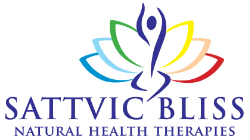The Covid restrictions have been hard on so many people, though it is re-assuring to see the relaxation of some of the restrictions in the last couple of weeks. In many professions, social distancing is an option and can be managed relatively easily. Polarity Practitioners and other physical therapists face unique challenges. We are in contact with bodies, encourage deep breath work and are often in close proximity to faces. Maintaining a 2m distance is clearly not possible. At this time there is no indication of when the restrictions on this kind of close work will be lifted. The Government have classed us all (physical therapists) as Massage Parlours and put us in the same category as beauty therapists and nail technicians. The term “Massage Parlours” is currently being hotly challenged by the CNHC, CThA and FHT amongst others so we are hopeful that we will at least get a new classification at the end of all this. But no re-classification will help against the lost income and uncertainty. The Think Tree Hub (another general professional body for therapists) has launched some short courses for its members. The course include “planning for the new way of working under covid restrictions”, because we will need to start planning before the re-start date is announced. Above anything else we will need a risk-assessment. All re-opening businesses will have been through this process, so we are not alone. Some areas we need to consider are:
Any surfaces (chairs, rugs, decorative coverings etc) in the treatment room that could hold infectious vapour (from breathing or touch)
Appointment timings
Cleaning
PPE (masks and gloves)
Sanitiser
Safe disposal of tissues (clinical waste bags etc).
The recommendations that we have seen coming through from various professional and some random though sensible sources include:
No soft furnishings in the treatment room
Dedicated entrance for clients (not passing through other rooms)
No rug or carpets
Long gaps between clients
Lots of extra cleaning
Masks for therapist and client
Sanitiser
Shower and change clothes after each treatment.
Hot wash all non disposable fabric after each contact.
No incense sticks to be burnt (!!!)
Take the clients temperature with a non-contact thermometer.
Safe disposal of tissues (clinical waste bags etc).
For some people, the risk assessment will only confirm that home working is almost impossible. So many of us work from home in a warm, safe, comforting and relaxing environment. A sterilised room simply won’t provide the client with the best result, especially for those with mental health issues exacerbated by the covid lockdown.
So, what can we do instead when we are allowed to touch people again. We can use an external clinic (when they are open again). The environment will still be clinically clean but it avoids a lot of the home risks. Alternatively we could visit clients in their own homes. Either option will involve travel, lifting equipment and lots of plastic bags for the multiple changes of clothes and towels and coverings that will be required. It also going to be expensive on washing, but at least there are options. Risks assessments will be needed regardless of where you work and they will probably be scary documents to write, but they show a duty of care that will help clients feel more confident and enable us to comply with the guidelines. Please remember that the world will get back to a semblance of normality at sometime. In the meantime lets hold the space and learn from all it has to tell us.
Namaste
